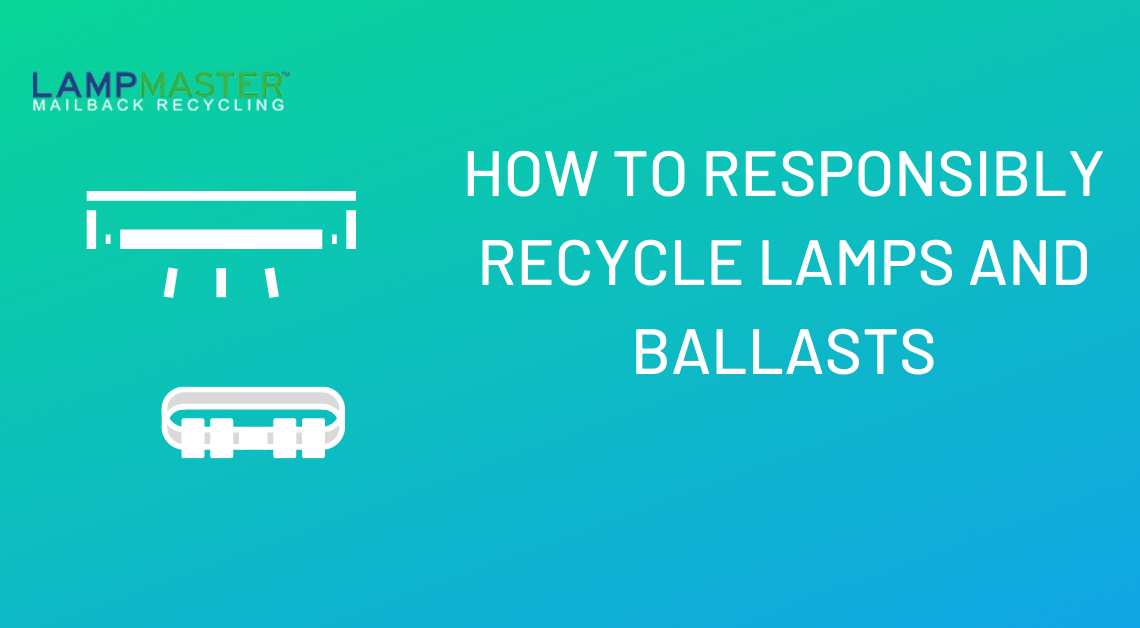There are about 310kg of toxins released into our environment every second. The improper disposal of lighting materials contributes to this situation. Many people can suffer from chronic illnesses from exposure to toxins.
Are you looking for your own way to help the environment? Then, start recycling your used lamps and ballasts. Lamp recycling and ballast recycling helps to reduce toxic waste, decrease pollution, and conserve natural resources.
Proper procedures will help you prevent breakage and leakage to ensure safety. Continue reading to find out the recycling method for used lamps and ballasts.
1. Collect Used Lamps
Fluorescent tubes, CFLs, and LED bulbs are energy-efficient lamps. It contains mercury, lead, and arsenic, allowing the lights to last longer and cost less. However, these hazardous substances can cause great harm to the environment.
To start, separate the lights into categories: intact and damaged. It ensures safety from chemical leakage from broken pieces.
Reuse the boxes of the lamps for packing. You can use bubble wraps or packing papers as well. Ensure not to overcrowd the container, preventing breakage.
Wear protective gear, such as a mask and gloves, when dealing with broken lights. First, collect the powder and glass. Then, enclosed the materials in a sealed container.
2. Identify PCB and Non-PCB Ballasts
Ballast refers to the regulator in lamps. Some electrical ballasts contain polychlorinated biphenyls (PCBs).
It consists of toxic chemical compounds. With this, identify and separate PCB ballasts from non-PCB ballasts. Consider it a PCB carrier if you can’t find any label on the material.
Leaking PCB ballast needs special handling. If you wish to get rid of your PCB ballasts, contact your local hazardous waste response team right away. You can store the non-leaking material in a recycle bin for storage.
3. Store and Label Containers
You must not tape or tie the materials together to prevent breakage. Store all the used lamps and ballasts using a sealed container. Assign a storage space in your establishment to keep the materials until shipment.
Ensure to label the containers. It helps couriers determine hazardous chemicals and the proper way to handle them.
4. Look For Recycling Centers
Lamp recycling, ballast recycling provides many benefits. With this, it’s vital to choose the best recycling center. You need to consider their services, pricing, location, and risk management.
Don’t hesitate to ask the team about their capabilities, procedures, and equipment. Keep note they would carry hazardous materials. They need to assure you that they can manage the used lamps or ballasts well to avoid problems.
5. Ship Your Lamps and Ballasts
Mail-in or mail back is convenient for a small number of used lamps and ballasts to recycle. First, you’ll receive a container to store the materials. Then, you ship it back to the recycler.
It’s ideal to opt for a pick-up service if you collect enough materials to fill a truck. Self-transport is best if you’re near the recycling center.
Ensure to keep all essential documents to save yourself from any liabilities. The invoice covers the number of lamps, shipment date, shipping point, and destination.
Guide on Lamp Recycling, Ballast Recycling
Lamp recycling, ballast recycling prevents the release of toxic chemicals into the environment. You can recover and reuse some parts to create new products. Recycling protects the environment, reduces waste, and saves you money.
Need help in getting rid of your used lamps and ballasts in a sustainable way? You can reach us here if you have more queries on recycling used lamps and ballasts.


